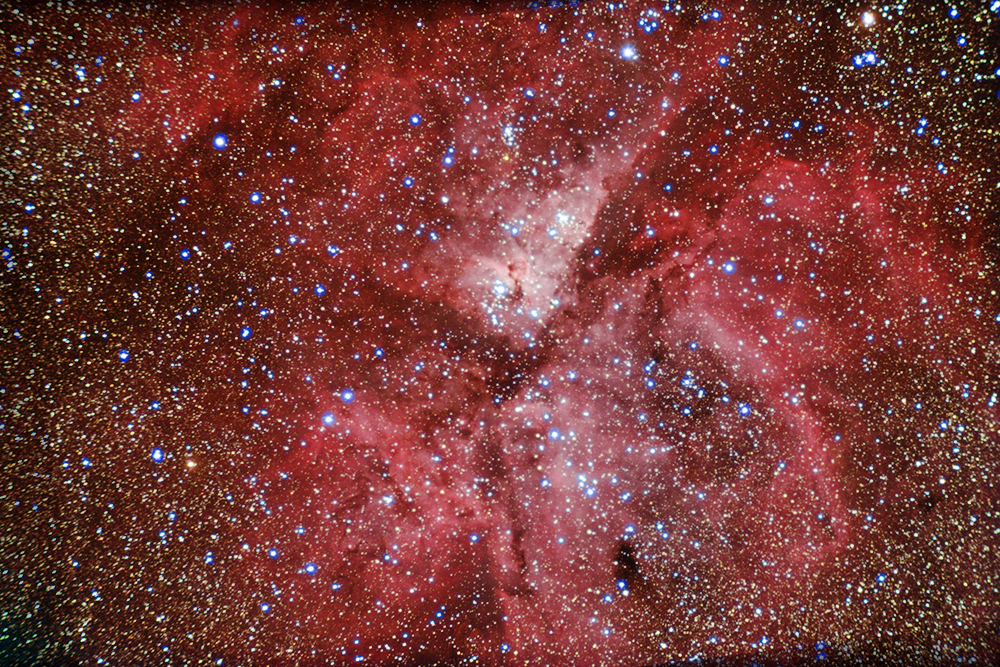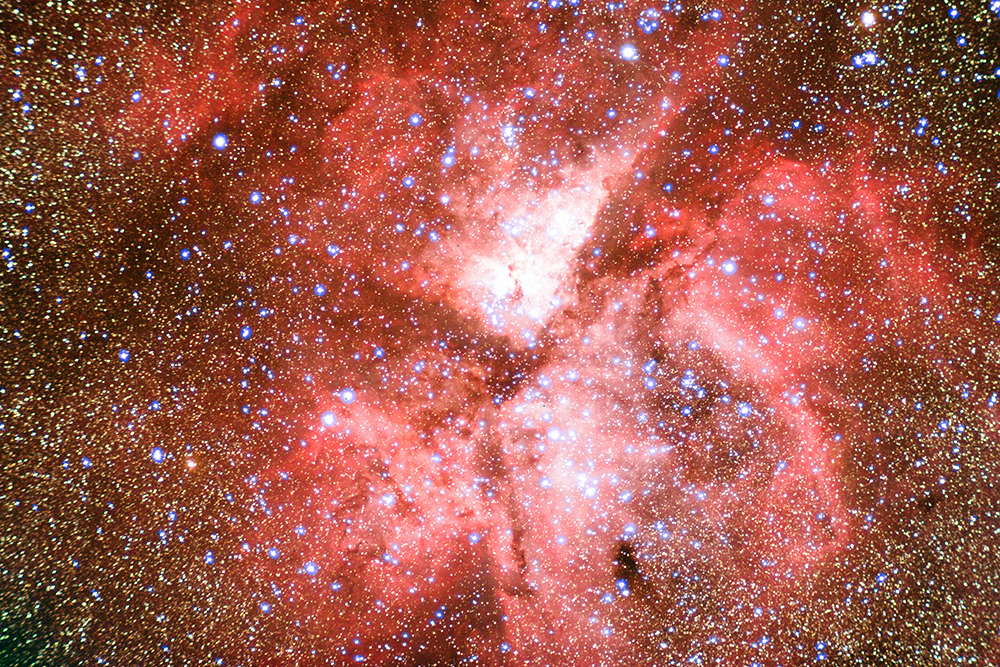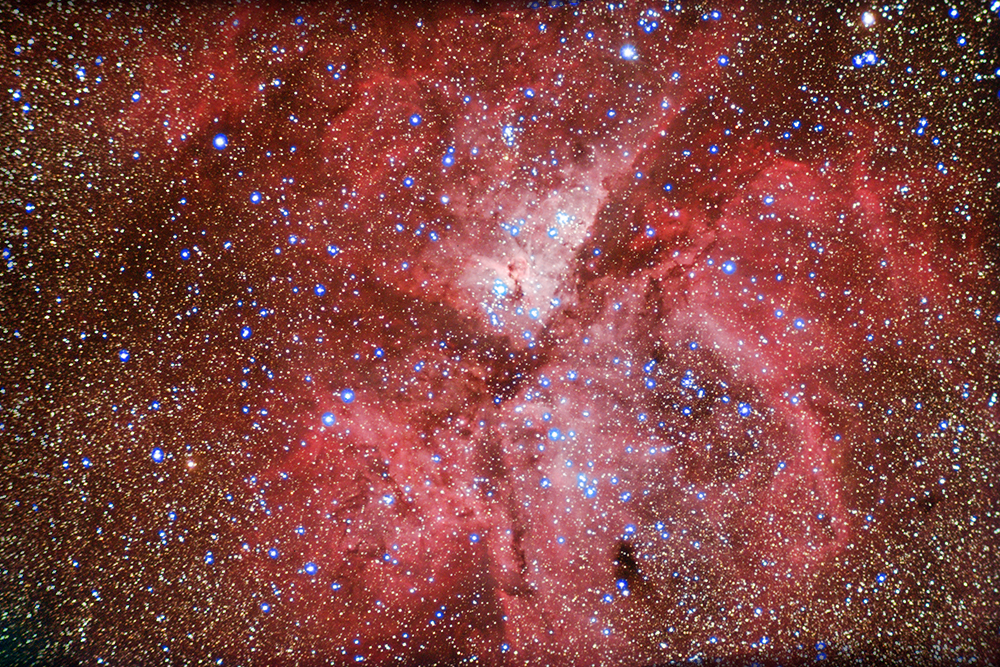
Combination of 5, 10 second images and 5 30 second image.
Modified Canon Digital Rebel DSLR camera. 5" f/5 refractor at prime focus.

The Keyhole Nebula (also sometimes called the Eta Carina Nebula) is the brightest emission nebulae in the sky. It is easily visible to the naked eye as a cloudy patch in the Milky Way, not far from the Southern Cross. The Keyhole nebula is definitely one of the top 5 objects of the southern skies. Even in binoculars, the field is strewn with patches of light and dark nebulosity. In a telescope the view is magnificent. Situated in the heart of one of the richest portions of the Milky Way outside of Sagittarius, the entire region abounds in clusters and double stars. Interestingly however, there are few emission nebulae in the area. It is as though all of the nebulae in the region had been gathered up together to make one stupendous object!
One problem with imaging NGC 3372 is the large range in brightness of the nebula. The brighter portions are so bright, they can be easily washed out in a long exposure. Northern hemisphere observers who have tried to image M42 would be familier with this problem. This is seen in the image below, where detail in the brighter portions is lacking.

It was in an effort to maximise this that I took the short exposures shown in the first image. When the short exposures are combined with the long exposure using masks, it is possible to retain the detail in the brighter regions while still displaying the fainter regions of the nebula. This is shown in the image below.
